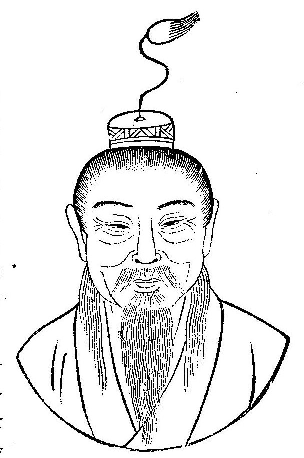The Oldest Library Classification System in the World
May 28 2021
We know you’re probably thinking something along the lines of “Ugh that sounds like such a dry subject. Hard pass, thanks.”. But before you scroll away, consider this: classification systems don’t just tell us where materials should be stored; they give us glimpses into what the people who created them (and by extension their cultures) considered important. Or, depending on how/why a system was created, it gives us a look into what the system’s intended audience considers important (e.g. the METIS system, created by school librarians with kid logic in mind, has two top-level animal categories: Pets and Animals). Looking at a classification system is a bit like seeing the world through someone else’s eyes.
As far as we know, the oldest bibliographical classification system (or at least the oldest surviving) was written sometime between 53 BCE to 23 CE in China. Researchers are pretty sure it was started by Liu Xiang (刘向) and ultimately compiled by Liu Xin (刘歆) under his supervision as part of a project commissioned by the Emperor Ch'eng Ti of the Han Dynasty.
Sadly, the original classification system didn’t survive the test of time, but we know its general breakdown from a younger text which describes it. The system was called The Seven Epitomes, the “epitomes” being what we now know as “classes”. This is a little confusing because the description found in the younger text only mentions six epitomes, though it’s been suggested that the seventh was a compilation of short summaries of what kind of book you could find in each of the six other epitomes.
1. Epitome of the Six Arts (Liu yi lüe)
Was the class relating to literature and its study. It had nine subdivisions: Odes, Documents, Rites, Music, Changes, Spring and Autumn Annals, Analects of Confucius, Book of Filial Piety, and Philology.
2. Epitome of the Masters (Zhu zi lüe)
Was the philosophy class. It had ten subdivisions, one for each of the common schools of thought at the time and one called Novelists.
3. Epitome of Lyrics and Rhapsodies (Shi fu lüe)
Was mostly a class about poetry. It had had five subdivisions; three on styles of poetry and two on other unknown genres.
4. Epitome of Military Texts (Bing shu lüe)
This one was a class regarding military strategy, and had four subdivisions: Tactics, Terrain, Yin/Yang, and Military Skills.
5. Epitome of Numbers and Divination (Shu shu lüe)
Was a bit of a Miscellaneous category with a hodgepodge of different topics, all but two of the subdivisions dealing with belief in the supernatural. It had six subdivisions: Astronomy, Chronology, The Five Elements of Wuxing, Divination, Miscellaneous Fortune-Telling, and Geomancy.
6. Epitome of Formulae and Techniques (Fang ji lüe)
Was a class on medicine. It consisted of four subdivisions Medical Classics, Pharmacology, Sexology, and Longevity.
By Alice Flecha (Volunteer Blogger)

